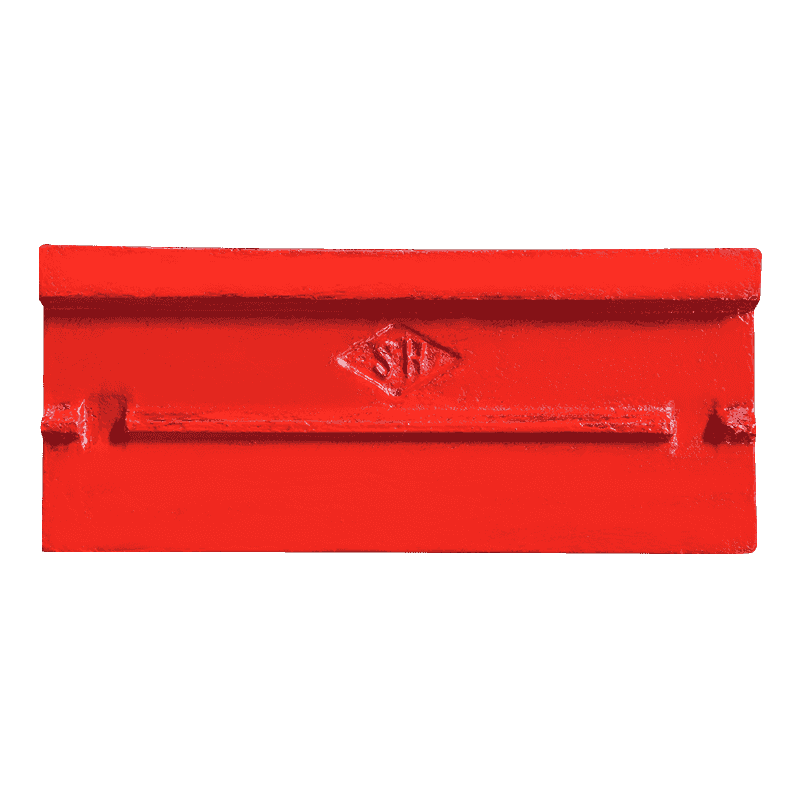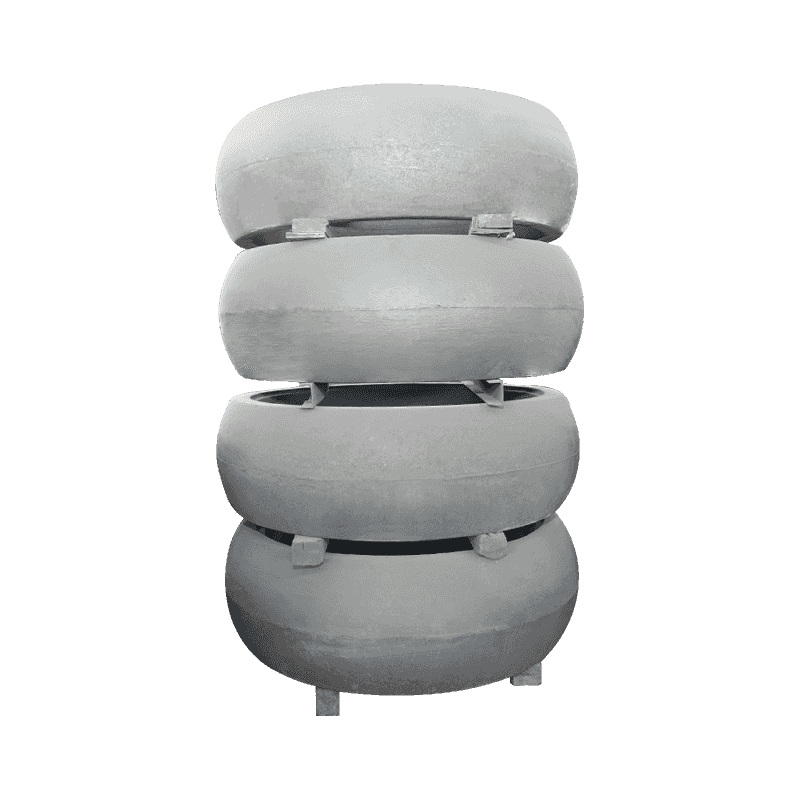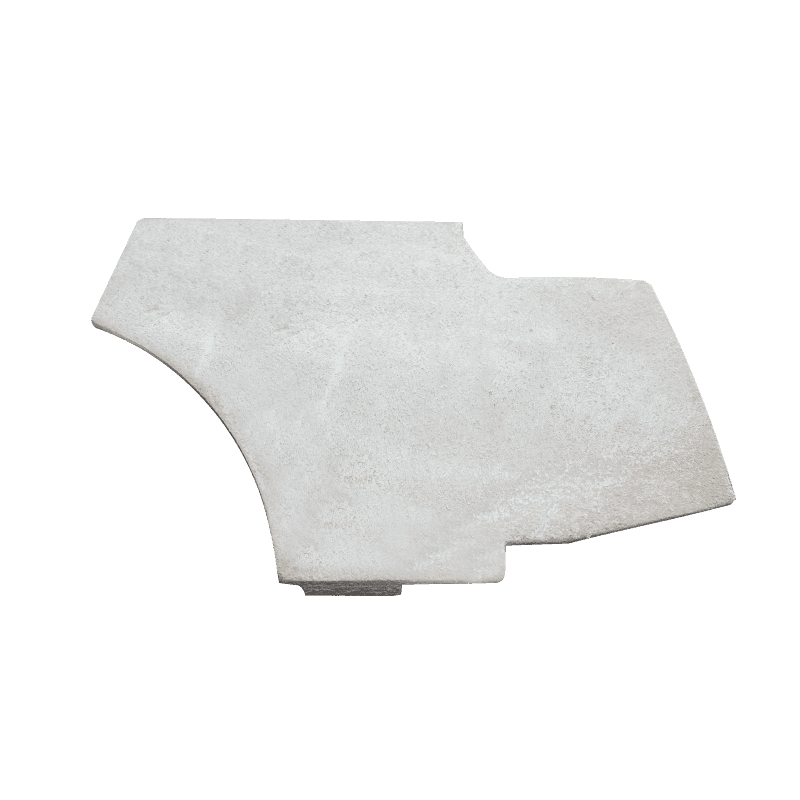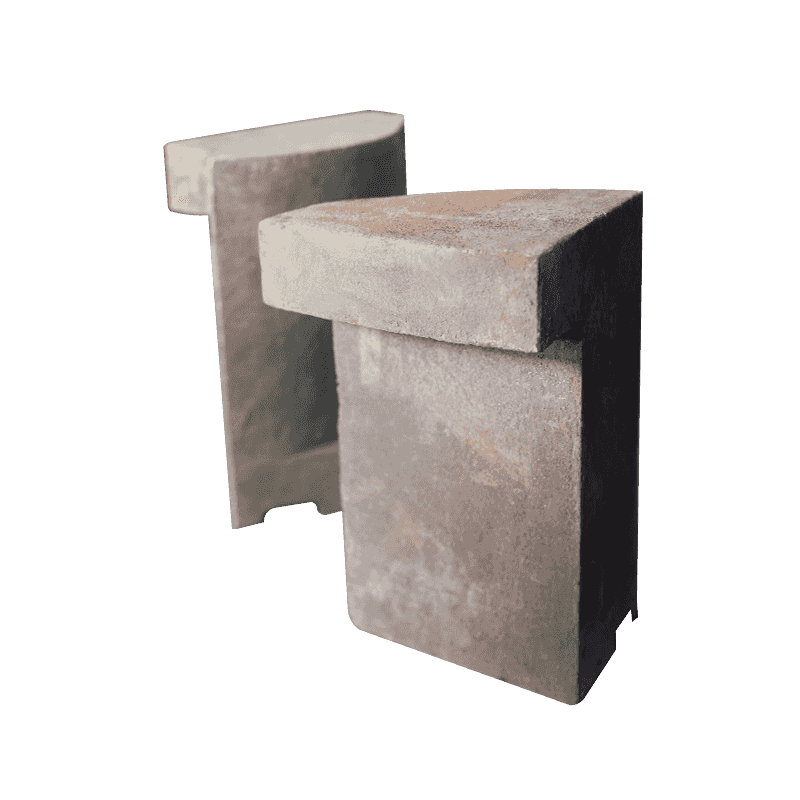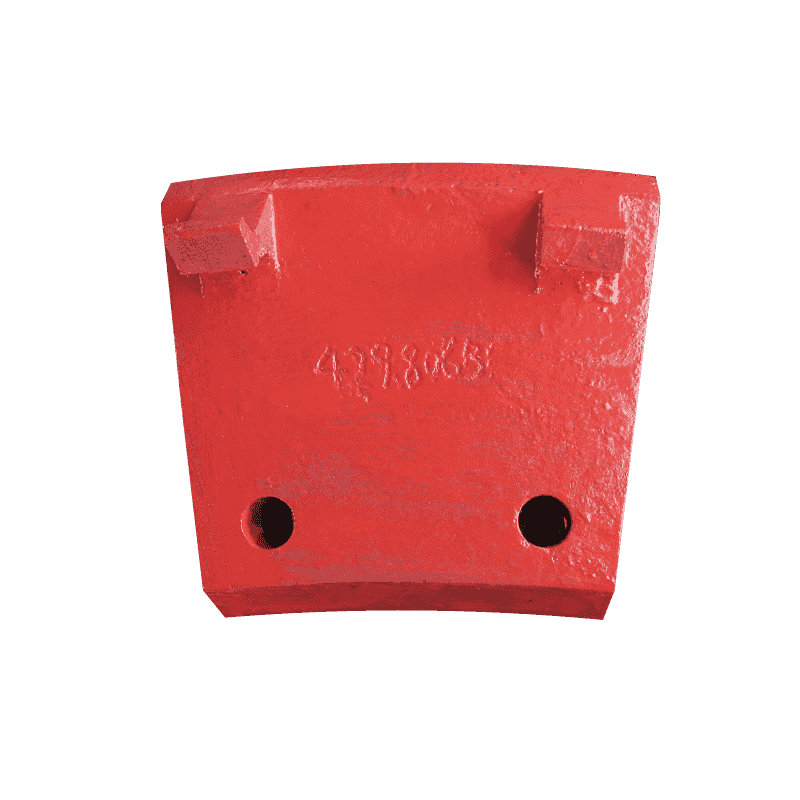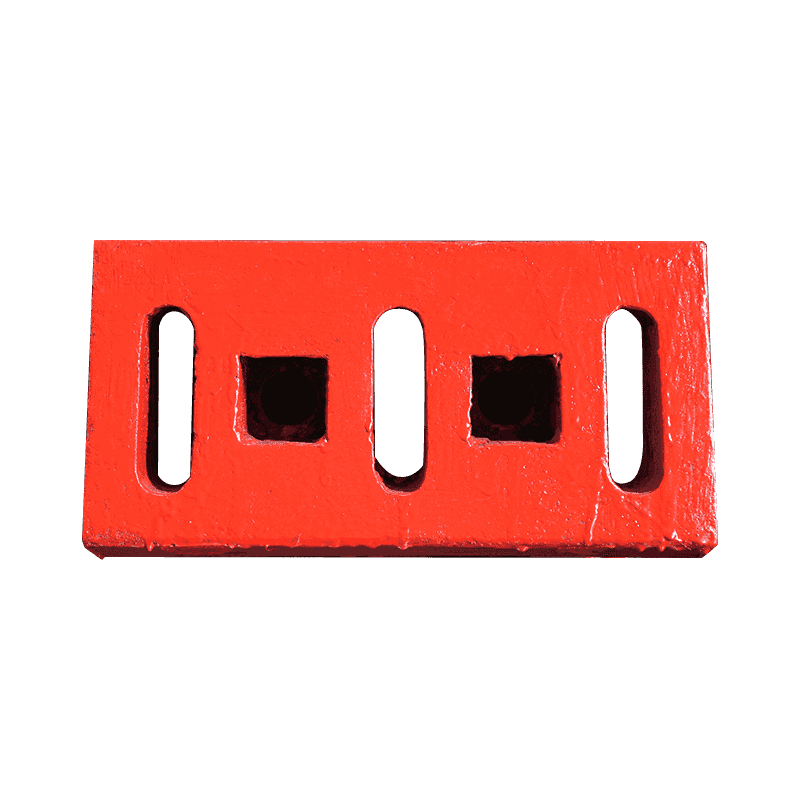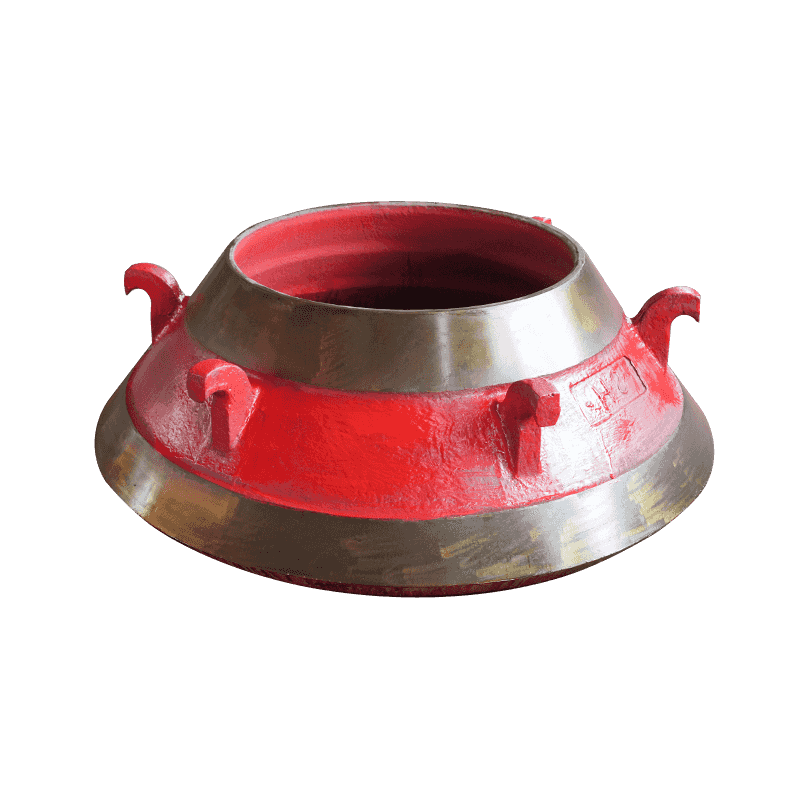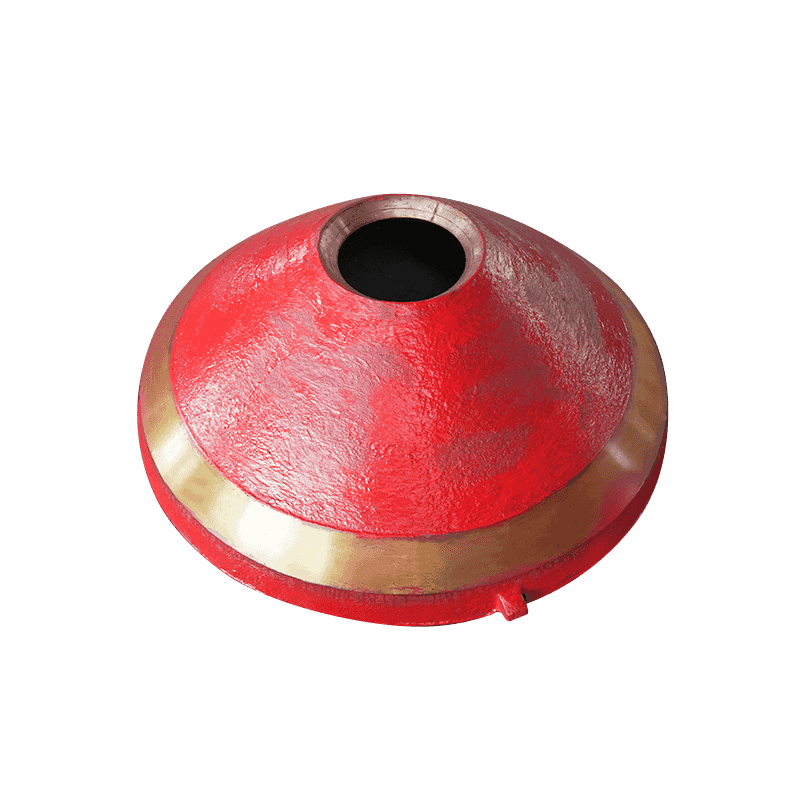How does the high-chromium hammer head become a "hard-core weapon" for high-efficiency and energy-saving crushing equipment?
In the mining, metallurgy, building materials and other industries, crushing equipment is a key link in the production line, and the performance of its accessories directly determines the equipment's use efficiency and operating costs. High-chromium hammer heads for high-efficiency and energy-saving crushers stand out in high-intensity working environments with their excellent wear resistance and impact resistance, becoming a "hard-core weapon" in crushing equipment.
The high-chromium hammer head is precision-casted with high-chromium alloy materials, with a high chromium content of 23~30%, and with an appropriate amount of alloying elements such as manganese and silicon, forming a metal matrix structure with both hardness and toughness. This unique alloy ratio not only ensures the excellent performance of the hammer head in high-impact and high-friction environments, but also effectively avoids the problem of easy wear and breakage of traditional hammer heads.
During the casting process, the hammer head adopts advanced vacuum casting and precision casting processes to improve the density and uniformity of the internal organization by removing potential defects such as pores and shrinkage. With subsequent surface heat treatment (such as quenching and tempering), the hardness of the final product can reach HRC58-62, with strong impact and wear resistance, and can ensure service life and stable performance even when crushing hard ores.
What "hard technology" does the performance improvement of high chromium hammer rely on?
In order to achieve a balance between the three major performance indicators of wear resistance, crack resistance and impact resistance, the high chromium hammer incorporates a number of advanced technologies in the manufacturing process:
Optimized ratio of alloy elements: The core foundation of the high chromium hammer lies in its high-quality material composition. The hammer is made of high chromium alloy as the main material, with a chromium content of up to 23%~30%. Chromium is the key to improving the hardness and wear resistance of metals. It can form a large amount of hard carbides in the metal matrix, significantly enhancing the wear resistance of the hammer surface. At the same time, appropriate amounts of manganese and silicon are also scientifically added. Manganese has the function of improving the toughness and strength of steel, and can enhance the impact resistance of the hammer, while silicon helps deoxidation and improves the overall uniformity and high temperature resistance of the alloy.
In order to ensure that the metal does not produce brittle cracks during high-temperature casting and heat treatment, the phosphorus and sulfur content is strictly controlled below 0.04%. If these two impurity elements exceed the standard, it is very easy to cause brittle interlayers or cracks inside the hammer head, thereby greatly reducing its service life. Therefore, the ratio of high-quality alloys is not only a "formula", but also a key basis for determining whether the hammer head can work stably.
Vacuum casting process: In the traditional sand mold or ordinary gravity casting process, the molten metal is prone to produce casting defects such as pores, shrinkage, and slag inclusions during the solidification process. These defects are very likely to become "stress concentration points" under high-load impact environments, causing the hammer head to crack or break early. The high-chromium hammer head adopts a vacuum casting process, that is, the molten metal is poured under a vacuum negative pressure environment, which effectively reduces the risk of metal oxidation reaction and gas inclusion.
The biggest advantage of this process is to improve the density and uniformity of the internal structure of the casting. By reducing oxidation inclusions and pore formation, the hammer head will not fail quickly due to "internal voids" when subjected to impact loads. At the same time, vacuum casting can also improve fluidity, so that the molten metal can better fill the complex mold cavity, ensure the molding accuracy of the details of the hammer head corners, and lay a solid foundation for subsequent heat treatment and processing. Through the high-standard vacuum casting process, the high-chromium hammer head is superior to ordinary castings in terms of structural integrity and mechanical properties, making it an ideal choice for heavy-duty working environments.
Heat treatment strengthening: The core performance of the high-chromium hammer head must be both "hard" to withstand wear and "tough" to withstand impact. Therefore, scientific heat treatment technology has become a key link in improving its performance. After the hammer head is cast, it must first be quenched, that is, it is heated to the critical temperature of the austenite zone (usually around 980°C) and quickly cooled to form a high-hardness martensitic structure on the surface of the hammer head. The hardness of this hardened layer can reach HRC58~62, which greatly improves its wear resistance, especially for continuous, high-speed impact crushing operations. However, "high hardness" is often accompanied by "high brittleness", so the hammer head will then undergo tempering. The purpose of tempering is to release the residual stress inside the hammer head without destroying the hardness of martensite, and to promote the transformation of part of austenite, thereby improving the overall toughness and crack resistance. This process ensures that the hammer head will not break due to excessive brittleness when subjected to a huge impact, thus achieving the ideal state of "hard with toughness". Some high-end products may also adopt multi-stage heat treatment strategies such as multiple tempering and isothermal quenching to further optimize the microstructure, improve the structural stability while maintaining the hardness, and provide guarantee for the high-performance output of the high-chromium hammer head.
The following are the core technical parameters of the hammer head:
| Performance Parameter | Technical Description |
|---|---|
| Alloy Material | High-chromium alloy (Cr 23–30%, Mn 0.6–1.2%) |
| Casting Process | Vacuum casting + Precision casting |
| Surface Treatment | Quenching + Tempering |
| Surface Hardness | HRC58–62 |
| Microstructure | Martensite + Retained Austenite |
| Impact Strength | High, suitable for high-load impact crushing environments |
| Service Life | 2–3 times longer than traditional high manganese steel hammer heads |
Through this set of rigorous technical systems, the high-chromium hammer head not only performs well in the initial stage, but also maintains high-efficiency performance during long-term use, becoming a solid guarantee for stable production.
In practical applications, what value does the high-chromium hammer head bring to the enterprise?
Compared with hammers made of traditional materials, high-chromium hammers bring advantages in multiple dimensions:
1. Significantly extend the replacement cycle
Due to its high hardness and high toughness, high-chromium hammers can withstand continuous impact and strong friction, and their wear-resistant life is 2 to 3 times that of ordinary high-manganese steel hammers. The frequency of equipment replacement is reduced, significantly reducing downtime.
2. Reduce maintenance costs
The hammer is not easy to break or peel off, the maintenance frequency is greatly reduced, the investment of maintenance workers is reduced, the cost of purchasing accessories is also reduced, and the overall operating cost is greatly optimized.
3. Improve production efficiency
The hammer has stable performance, strong impact force, and uniform crushing, which helps to improve the overall crushing efficiency and finished product particle quality, and further increase the added value of the product.
4. Support green and environmentally friendly production
The high wear-resistant characteristics reduce resource consumption and metal waste generation, extend the life cycle of equipment, and are in line with the current "green mine" and "clean production" concepts.

 English
English  русский
русский  عربى
عربى 